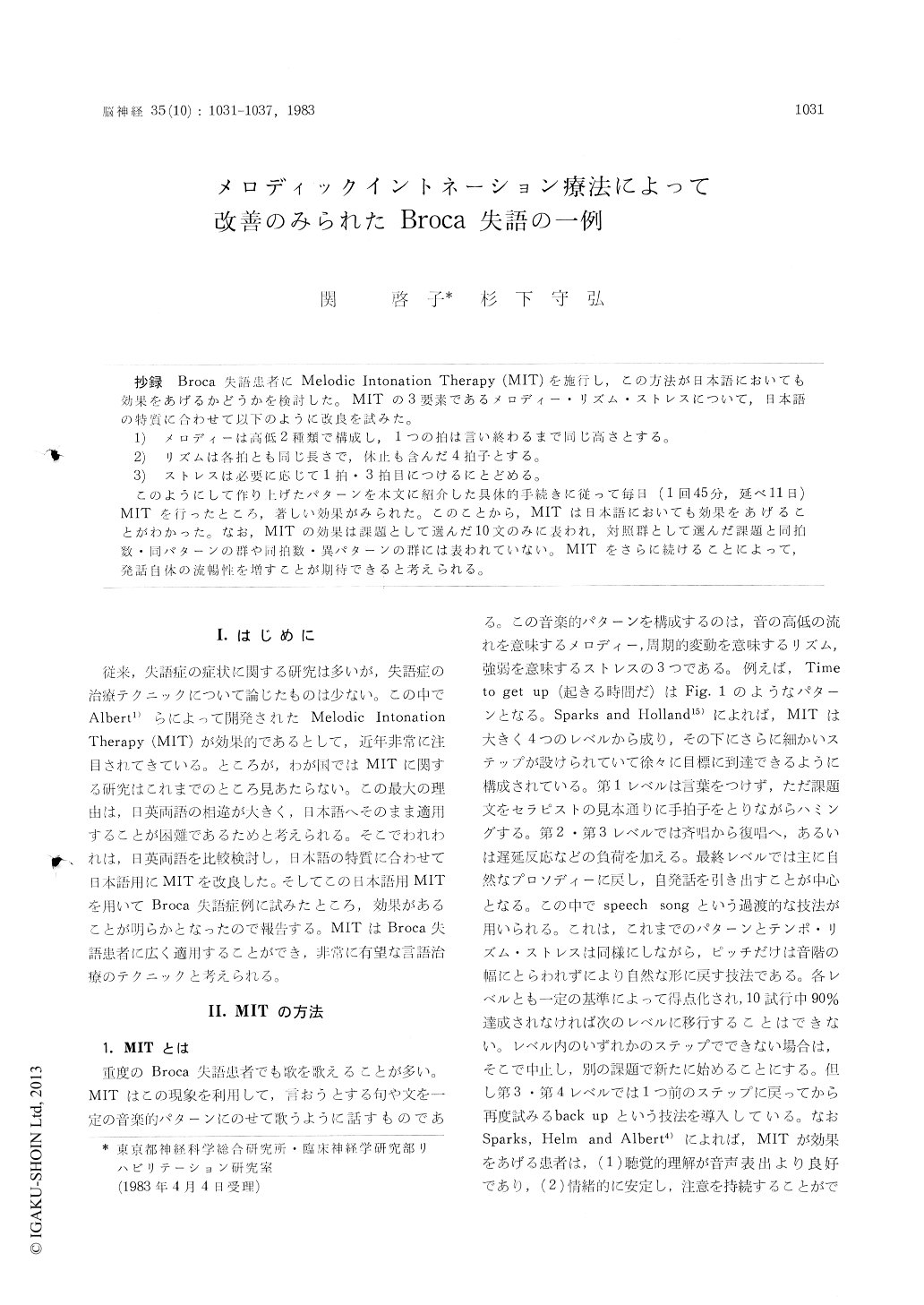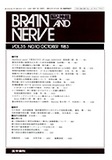Japanese
English
- 有料閲覧
- Abstract 文献概要
- 1ページ目 Look Inside
抄録 Broca失語患者にMelodic Intonation Therapy (MIT)を施有し,この方法が日本語においても効果をあげるかどうかを検討した。MITの3要素であるメロディー・リズム・ストレスについて,日本語の特質に合わせて以下のように改良を試みた。
1) メロディーは高低2種類で構成し,1つの拍は言い終わるまで同じ高さとする。
2) リズムは各拍とも同じ長さで,休止も含んだ4拍子とする。
3) ストレスは必要に応じて1拍・3拍目につけるにとどめる。
このようにして作り上げたパターンを本文に紹介した具体的手続きに従って毎日(1回45分,延べ11日)MITを行ったところ,著しい効果がみられた。このことから,MITは日本語においても効果をあげることがわかった。なお,MITの効果は課題として選んだ10文のみに炎われ,対照群として選んだ課題と同拍数・同パターンの群や同拍数・異パターンの群には表われていない。MITをさらに続けることによって,発話自体の流暢性を増すことが期待できると考えられる。
Since Albert et al. (1973) published Melodic Intonation Therapy (MIT), this new technique for Broca type aphasics has won a good reputation because of its remarkable efficiency. Many improv-ed cases have been reported. On the contrary, there seems to be no study on MIT in Japan. This gap may be mainly caused by the great dif-ference between two languages which makes dif-ficult to apply original MIT to Japanese language. Through a comparative study of two languages, we have made some amendments on original MIT, which just fit for Japanese.
MIT is designed to generate verbal output by embedding target phrases and sentences in a sim-ple, nonliguistically loaded melody pattern. The pattern is consisted of the melody line, the rhyt-hm, and points of stress.
Now let us explain our Japanese version of MIT concerning these three elements. As for melody line, our version has only two pitches ; high and low, since Japanese language has a pitch accent which is decided in each word. As a result, the melody line of Japanese version is far more simple than the original one, which has four pi-tches. The rhythm of English is called "stress-timed rhythm", which means that a part between two syllables that have primary stresses tends to be spoken at regular intervals regardless of the number of syllables between them. Consequently, the tempo of speech varies depending on the number of syllables between them. On the other hand, Japanese has "syllable-timed rhythm", which means isosyllabic. It has been recently indicated that Japanese has a quadruple time including rests, which is the base for "ONSURITSU" (the rhythm consisted by the number of syllables) such as the seven-and-five syllable meter. According to this view, our version is formed as a quadruple time. Stress is the important factor in English, but not in our language. In Japanese, each syl-lable is articulated by the same respiratory ener-gy. So, stress is excluded in our version.
Following is the successful case report usingthis pattern according to the gradual procedure described in Table 1. The case is a 34-year-old right-handed female diagnosed as cerebral infarc-tion. She demonstrated mild Broca aphasia. We prepared three groups of sentences as a experi-mental design. The group I is consisted of 10 sen-tences from 5 to 14 syllables, the group II is made up of 10 sentences each of which corresponds to each sentence in the group I from the view-point of the number of syllables and the pattern, the group III is composed of another 10 sentences each of which has the same number of syllables but different pattern from each sentence in thegroup I. Time required in speech and the number of errors were recorded for each sentence in three groups both pre- and post- MIT. If reduction of time and errors is observed only in the group I, the effect should be attributed to MIT and not to spontaneous recovery. She received intensive MIT for 11 days (45 minutes a day). The result is shown in Table 2. The group I showed statisti-cally significant reduction of time and errors post-therapeutically. Therefore, we have concluded this case as effective by MIT

Copyright © 1983, Igaku-Shoin Ltd. All rights reserved.


